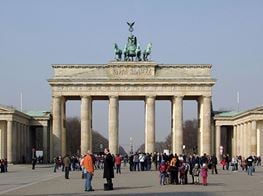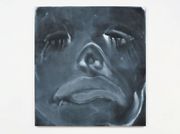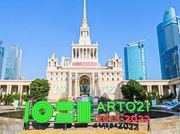Berlin's belated Biennale: A response to the responses

When I walked into the Akademie der Künste to attend the press conference of the 9th Berlin Biennale for Contemporary Art—titled The Present in Drag and curated by the online collective, DIS—I wondered if it would be possible to locate a grounded position from which to take a pragmatic look at the exhibition. The difficulty of reviewing a large exhibition in which your friends are participating and its curators are people you know is not something to look forward to, in today’s global contemporary artplex, where everybody knows everybody. Nowadays, when people are aware of a critic’s personal connection to their subject, they will dismiss any pretence to objectivity: their praise will be considered a favour, and their objections a sign of envy.
In the past, both Artur Żmijewski's Occupy-inspired iteration of the Berlin Biennale in 2012 and Juan Gaitán’s 2014 foray into museological critique had their own friends and enemies, provoking positive and negative responses from a wide range of expected and unexpected positions. Having read most of the reviews of the current Berlin Biennale, I would like to chart a modest position in regards to the latest edition. But rather than repeat claims and opinions, I will try to fill in the gaps surrounding the critiques of this Biennale instead.

When the Berlin Biennale selection committee—headed by Gabriele Horn, the Director of both KW Institute for Contemporary Art and Berlin Biennale for Contemporary Art—picked DIS as the curators for the 2016 edition, it was clear to those of us familiar with the collective that the exhibition, both in form and content, would deviate from expected norms. In choosing DIS, the committee took a risk: they entrusted the Biennale to a band of outsiders who don’t owe their reputation to the art world's own industrialised system, but are instead known for their accomplishments at forging connections between advertising, fashion, communication and popular culture via the Internet. Given the ideological and professional distance separating DIS from the regular art world apparatchiks, grandiose dismissals of the show by the art press are misdirected if not unfair. Expressing shock or approaching the show as a usual biennale, a position that most critics so far have taken, does not get to the heart of what this Biennale both accomplishes and signifies.
In my opinion, the 9th Berlin Biennale is the first large scale institutional attempt to integrate contemporary art, not only materially—this was achieved decades ago by the total industrialisation of the production and dissemination of art—but also philosophically into the larger frames of creative design, commerce and popular culture. (A similar integration occurred with New York's MoMA PS1 under the direction of its chief curator Klaus Biesenbach, who also happens to be the co-founder of both KW and the Berlin Biennale). Certainly, DIS has created an exhibition version of what they do best online in their eponymous magazine where they blur, if not all together remove, the distinctions between art, theory, advertising, fashion and start-up commerce. But while DIS is often misunderstood to be an ambassador of ‘post-internet art’, given the central role new communication technologies play in the violent insertion of real life into art, their exhibition does little to dismiss such a misunderstanding. The Present in Drag both indexes Post Internet art and applies the logic of digital immanence to the organisation of the exhibition by offering a contemporary history of the rise of the Internet aesthetics through its artist selection. This ranges from Ryan Trecartin, Timur Si-Qin to Jon Rafman, and Cecil B. Evans, Guan Xiao and Juan Sebastián Peláez.
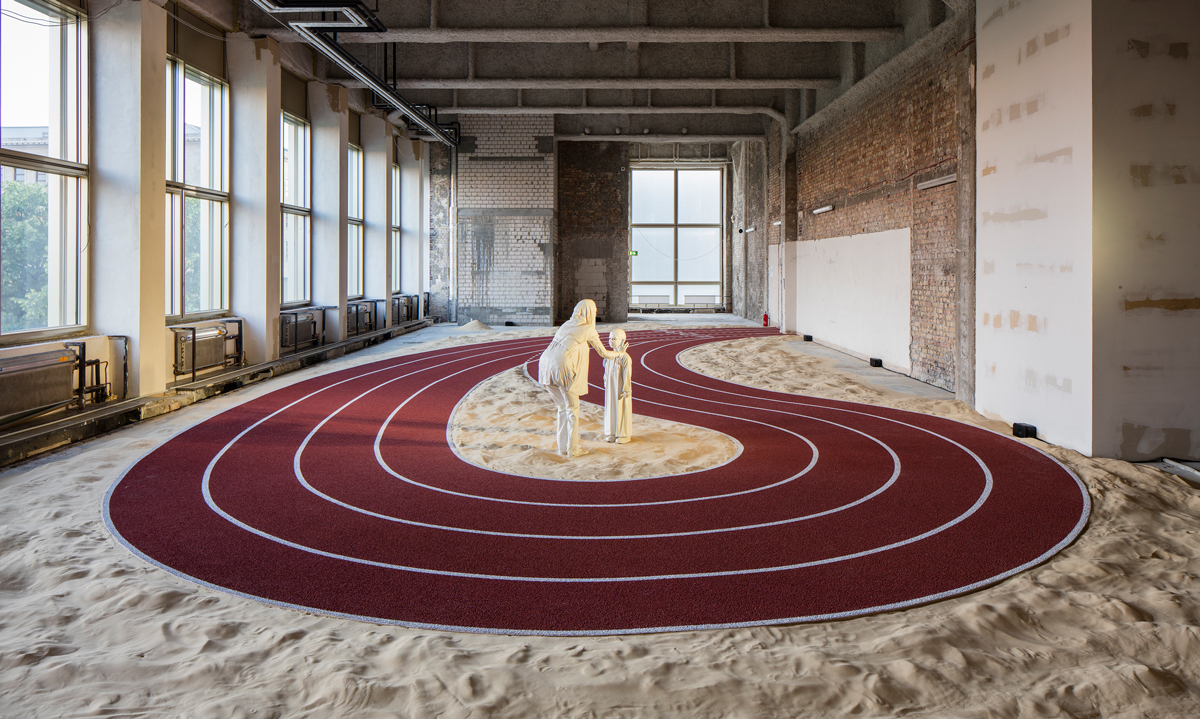
Touted as the exhibition of the digital zeitgeist, BB9 also overthrows the white cube’s mandate and instead opts for spatial forms that fit seamlessly within the aesthetics of our socio-political built environments, such as the corporate setting of two Biennale venues, the Akademie der Künst and the European School of Management and Technology (ESMT), the former seat of the Communist East German Government. The exhibition transforms these spaces into environmental experiences; in the latter venue, GCC's Positive Pathways (+) (2016)—which comprises of a running track, a sound installation, and two sculptural figures installed in a large boardroom—maximises the possibilities of installation art. It cleverly reflects on the forced construction of positive thinking as a new ideological paradigm for Middle Eastern monarchies, many of who are suspected of financing Islamist extremists.
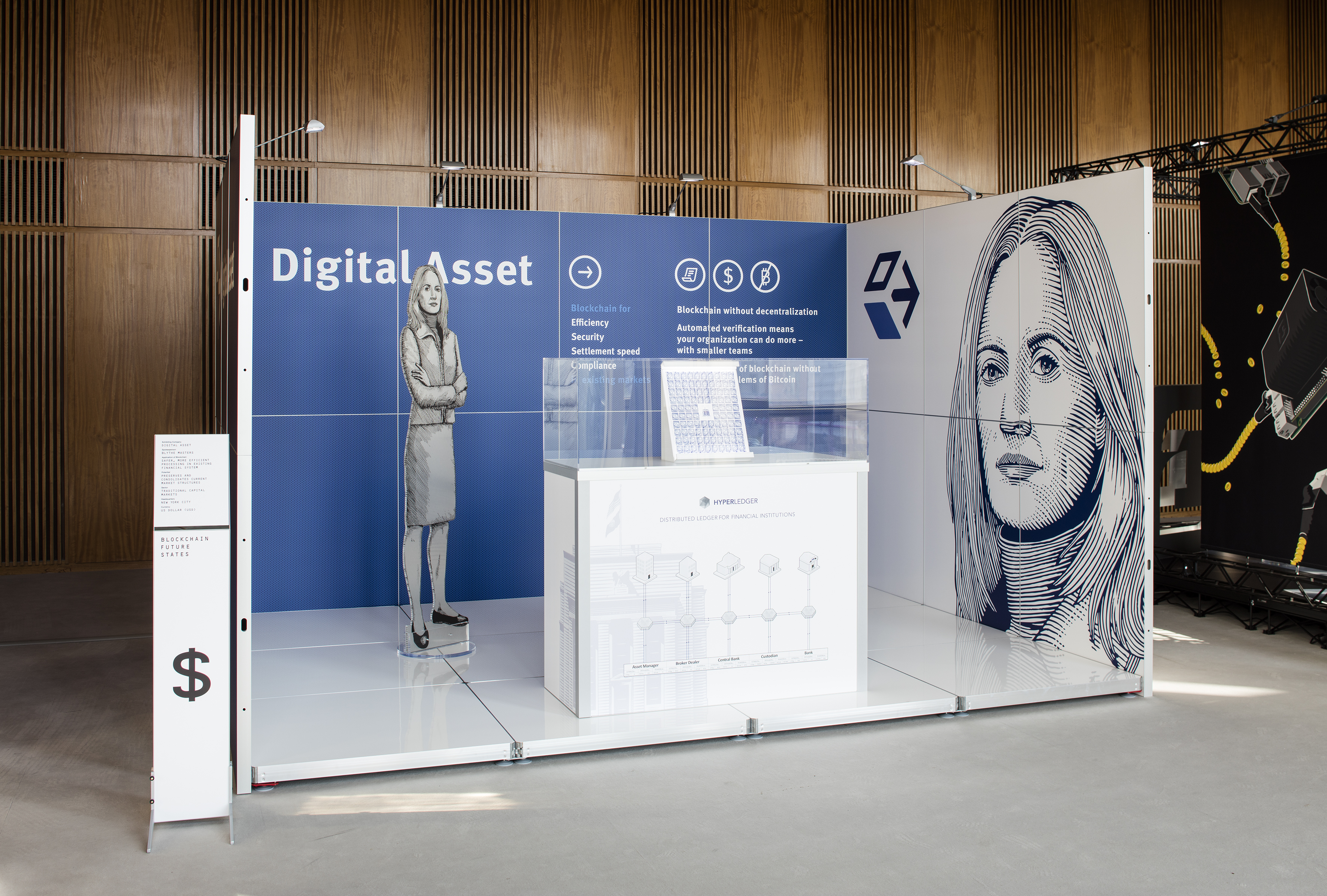
Of course, the transference of DIS-thetics from an online magazine to the physical space of contemporary art remains both politically and formally bumpy, yet the curators don’t seem to shy away from this awkwardness. In fact, these interruptions are where the exhibition’s politics might well be located. The inclusion of a number of business ventures, or works that allude to commercial activities—the green juice bar by Debora Delmar Corp, the outdoor furniture by fashion and lifestyle brand 69, and Simon Denny and Linda Kantchev's Blockchain Visionaries, for example—leave no choice for professional viewers who follow the theoretical developments of contemporary art but to automatically identify the show’s politics somewhere to the right of their own. Normally, the emancipatory spirit of DIS can be heard in the voices of their writers and contributors on the internet. And while the flat and digital representation of office equipment, luxury brands and fashion stereotypes can function as auto-critique in the online universe, their actualisation in the gallery space via commercial materials can come across as a phenomenological affirmation of capitalism. This results in the show becoming quickly misidentified as a celebration of what we have been accustomed to call the worldwide ‘neoliberal’ order.

But if we resist the habitual instinct to immediately see evil, The Present in Drag does offer a way to productively use contemporary art’s disappearance into technocapital for emancipatory objectives. The verisimilitude between the exhibition's materiality and the world of commerce makes it quite clear that DIS is not attempting to critique our sociopolitical systems, but is acting out its very machinery. An example of this process can be seen in Trevor Paglen's and Jacob Applebaum's slick and expensive Autonomy Cube, a functioning Tor server which provides online anonymity to users within its vicinity. In addition, Yngve Holen's beautiful Evil Eye Bildsuche accessories and contact lenses, and Shawn Maximo's #3, a functional and entertaining transformation of one of KW's bathroom into an information booth, make the viewers feel fine, even if our epoch is marked by the end of freedom as we know it. In presenting works such as these, The Present In Drag essentially puts an end to contemporary art’s theatre of autonomy, thus liberating art from performing the tedious ritual of critical distance by fully embodying the problem.
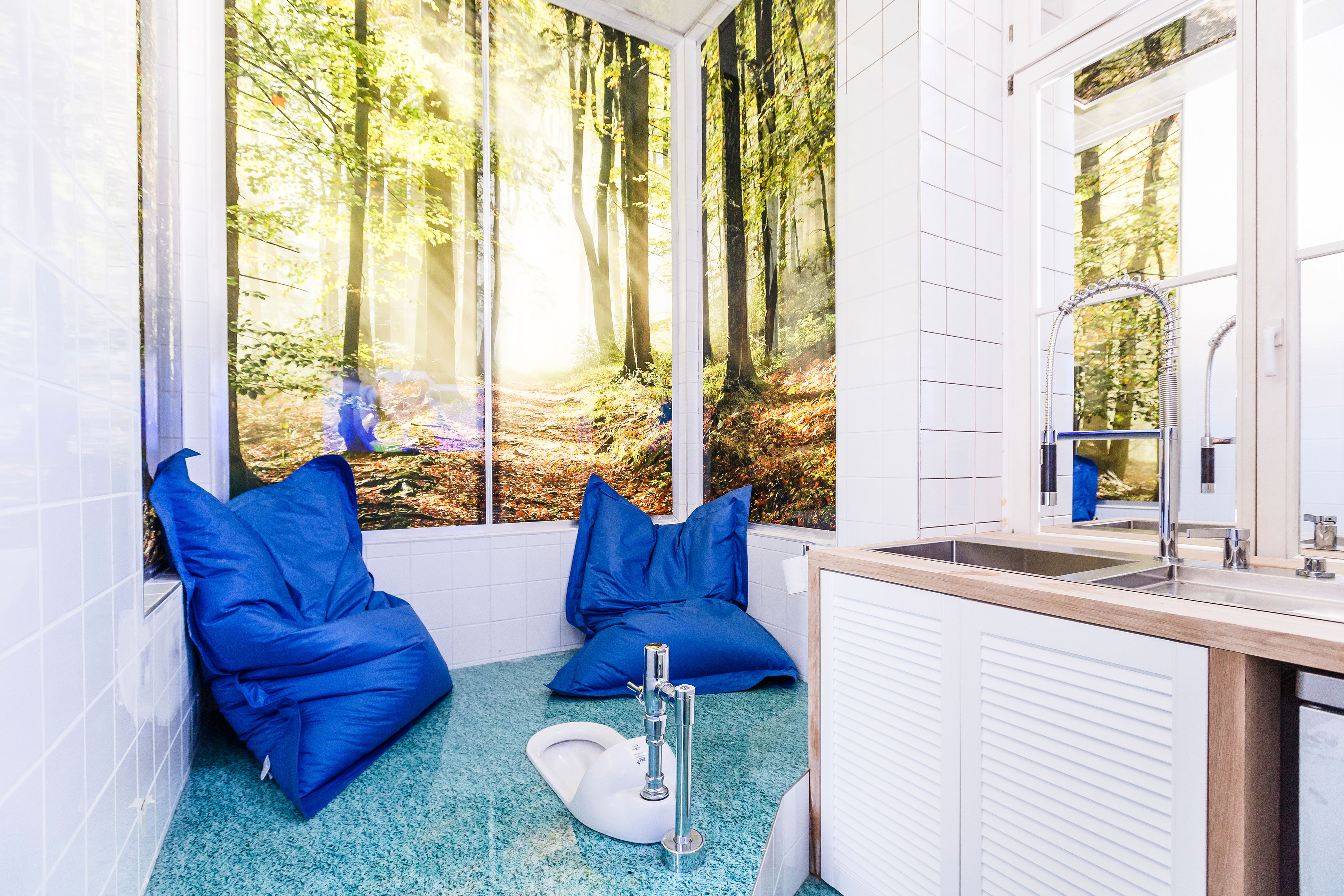
Indeed, if each exhibition frames its visitors like specimens in a petri dish, reflecting the climate in which they are contained, then two terms from the contemporary cultural dictionary that best describe the 9th Berlin Biennale are Normcore and Health Goth. In the last five years, these trends have been a large part of DIS's appeal. At the opening events, most visitors were dressed in uniform colours of black and white, wrapped in a blend of generic-looking garments and sporty accessories. This spatial articulation in and around BB9’s exhibition spaces functioned like Amazon predictive analytics: If you already wear this particular fashion, this is the art show for you. (And visitors were were literally buying it up, forming queues to purchase well-priced t-shirts and other items from designers like Hood by Air at the concession stand.)
So is the 9th Berlin Biennale a show ‘by kids, about kids and for kids?’ Yes. But in particular, this exhibition has a complex relationship with young people. It carries an almost synthetic youth unconscious, with the curators utilising a self-aware but eerie innocence normally attributed to youngsters. The strategy of cultural juvenilia is nowhere more visible than in some of the marketing materials produced as part of Babak Radboy's Not in the Berlin Biennale programme, the most provocative being the Biennale’s infamous slogan, memefied in Instagram and Facebook posts: ‘Why should fascists have all the fun?’ The question seems to belong to a 5-year-old reacting to the rise of extreme nationalism worldwide: it points to the naïve youthfulness the exhibition plays up by consciously placing the art world’s ‘adults’ in the position of parents unwilling to hand over the car keys to their kids.
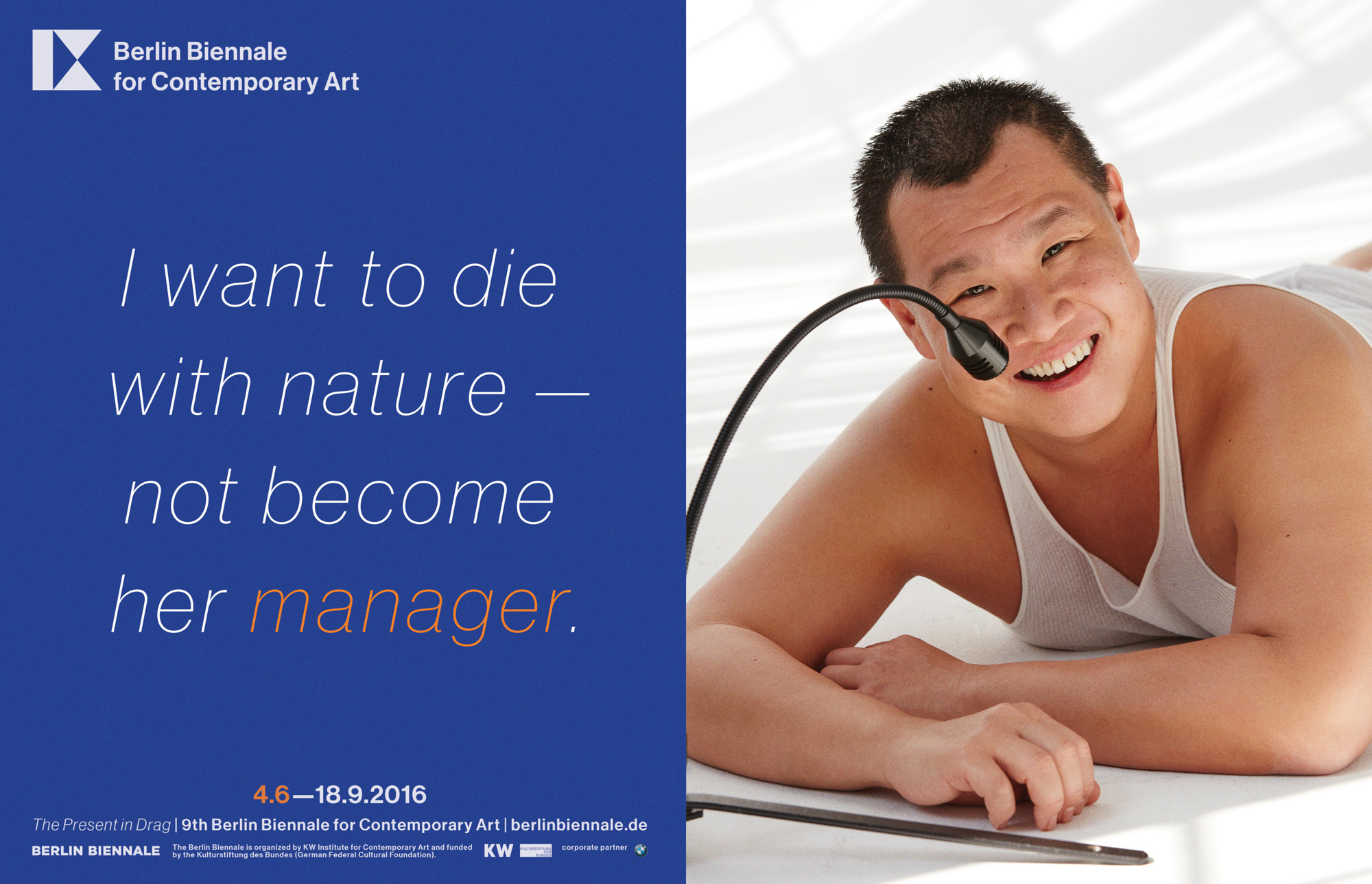
But we need to take this ‘youthing’ with a grain of salt. Youth culture itself is highly lucrative, and while the lines separating marketing, commerce and art were once bold and impenetrable, the situation in today’s hypercapitalised art ecology is different. The precariats of today's indebted and unemployable labour market tend to valorise the virtues and forms derived from the corporate world’s infrastructure. The strategy of losing oneself in the possibilities of commerce is the new black; and institutions have been following suit. Perhaps this is exactly why one of the most successful aspects of the show is its failure to make the transition from an anti-capitalist to a pro-capitalist position as smooth as one imagines Biesenbach & CO would have liked. The result is a biennale that becomes politically challenging precisely because it has put art’s tendency to avoid direct political messaging into conflict with the glaringly political essence of cultural production itself. In this respect, the beautiful disconnect between aims and means is where The Present in Drag finds its redemption. The curators do not cover up the deep contradiction between what things are and how they come across; rather, they underline them.
Looking at this theoretically, there is no way to unleash capital’s emancipatory potential without first introducing a bold new concept. Yet, The Present In Drag stops short—or rather intentionally stays shy—of theorising, and instead outsources its conceptual production to other writers like Suhail Malik and Armen Avanessian, who were invited to guest edit an issue of DIS magazine concurrent to the Biennale. As vocal critics of the ideas and practices of contemporary art, Malik and Avanessian introduce two related theoretical lenses for the exhibition: the time complex and Post-Contemporary. To paraphrase the writers, the time-complex refers to the loss of human agency and experience within today’s social organisation of time. For them we are now governed by, ‘complex systems, infrastructures and networks in which the future replaces the present as the structuring condition of time’. This leaves both the political left and right incapable of dealing with the present; in short, ‘we are increasingly wholly pre-empted and post-everything’. Malik and Avanessian then introduce the Post-Contemporary as a new temporal state in which the future constantly invades and forever haunts the production of both the present and past.
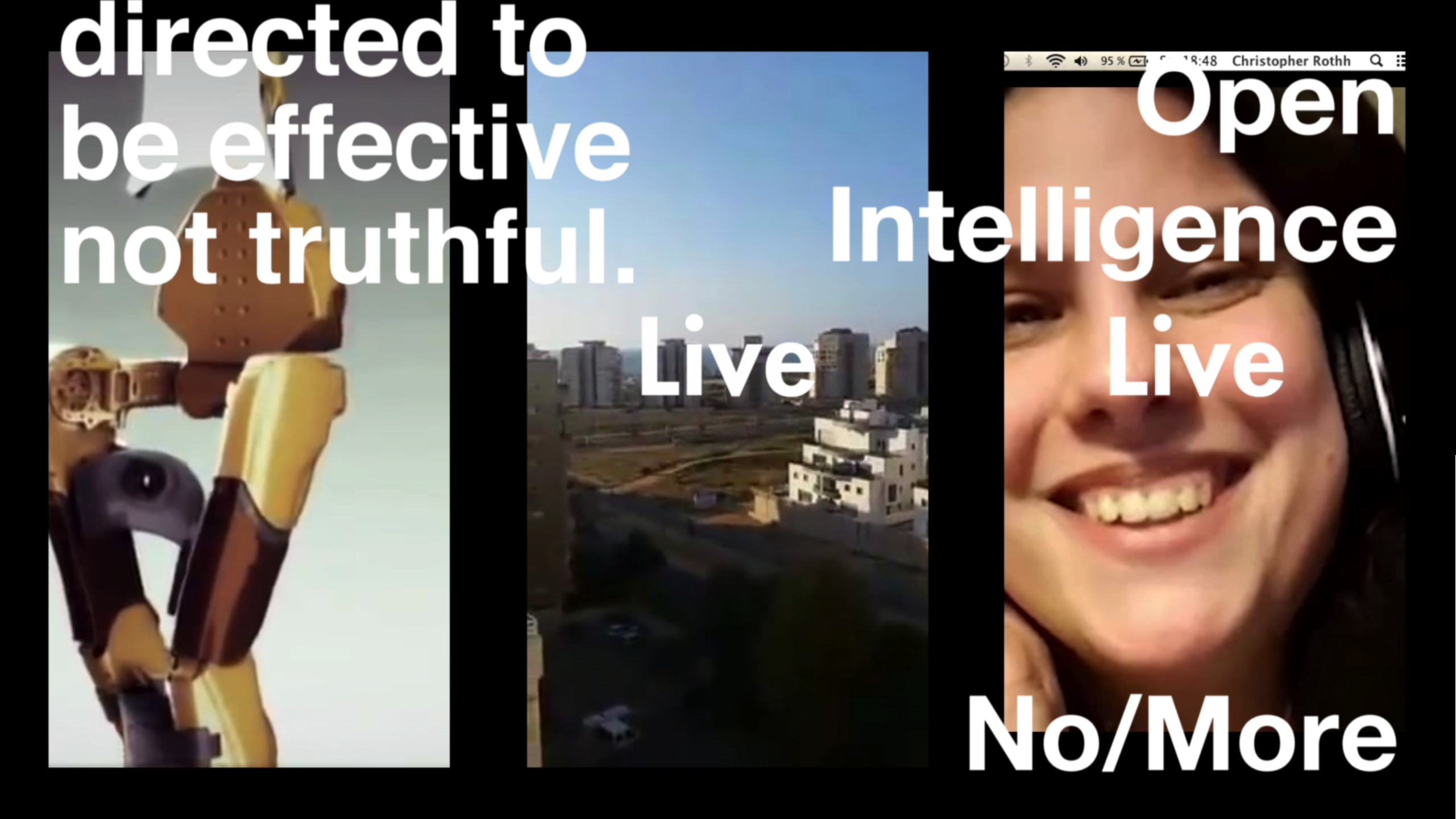
These arguments seem to be little more than a repackaging of Nick Land and Reza Negarestani's concept of ‘hyperstition’—altering the fabric of reality through the insertion of fictional elements so as to bring about demonstrable change. They are also left unsubstantiated by most of the works included by the curators in the exhibition. In fact, the Biennale's active consciousness of practices, theories, and philosophies from the last 10 years only acknowledges, if not also reinforces, the vacuuming power of ‘the contemporary’ in the process of exhausting everything, including all thoughts and practices surrounding futurity.
In the end, it is the accelerated contemporaneity of The Present in Drag that enables the DIS debut to matter both politically and aesthetically. The exhibition assertively manifests the problems and contradictions of contemporary art in the full glare of the present, and reframes that which is already hyper-contemporary. It is an original attempt at periodising the present and making it palatable for the future. Instead of acting the role of delusional emperor without clothes (the state of most internationally acclaimed curators), DIS is caught naked changing into drag on a world stage, leaving the state of contemporary art bare for all to see. —[O]




